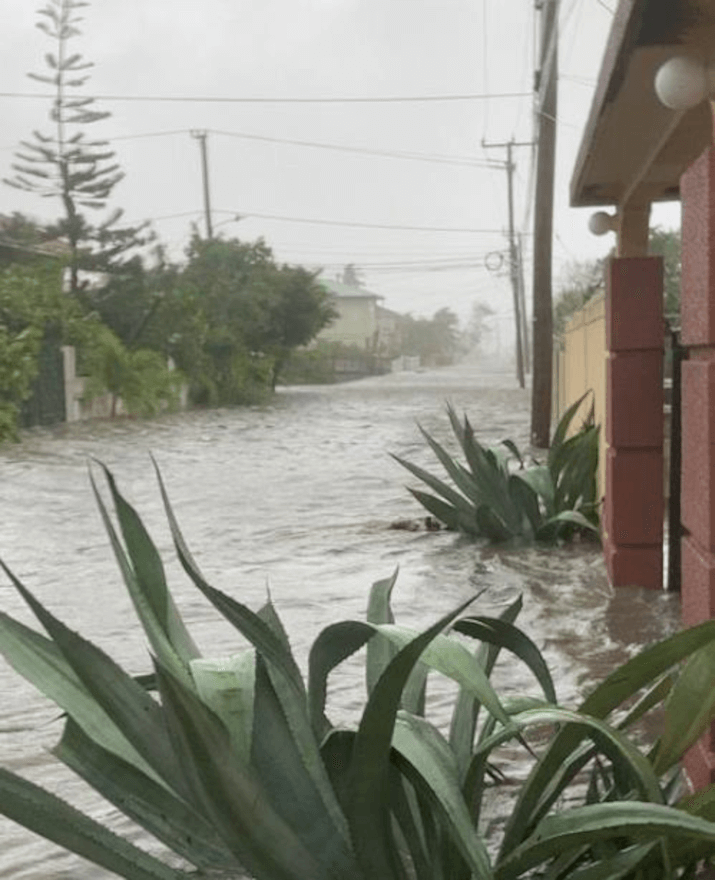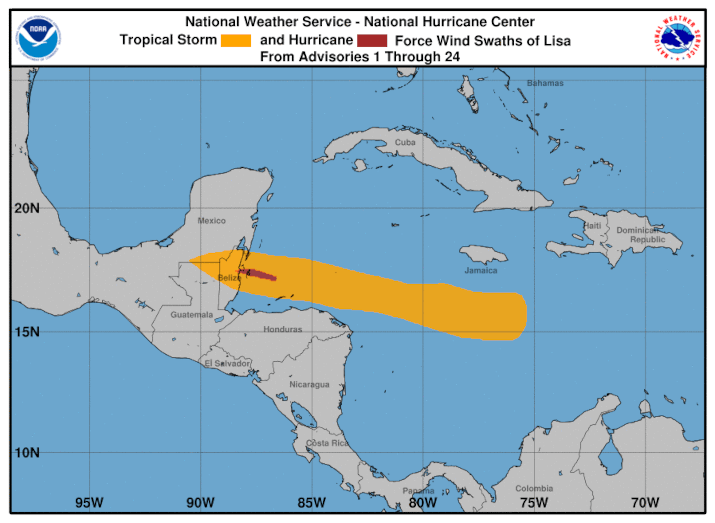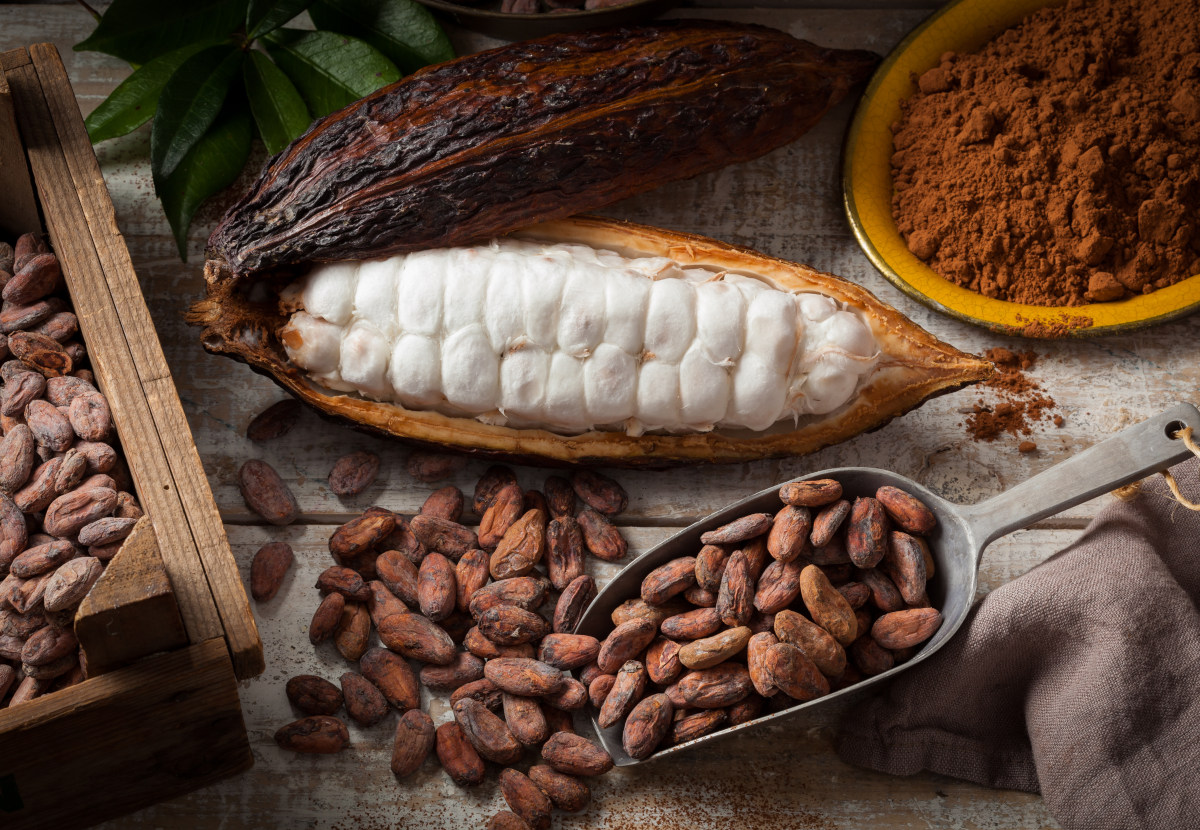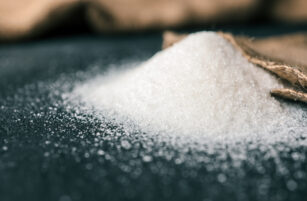Opinion Focus
- Hurricane Lisa passed within 35 miles of our farm.
- We’d spent 2 days preparing in case of extensive storm damage.
- Here’s what we’ve learned.
This week I was going to write about the challenges of raising money to run an agricultural operation, then Hurricane Lisa paid a visit. It’s well towards the end of the Atlantic hurricane season, and Lisa was known as INVEST 95L for about 10 days, nudging the top of South America before intensifying just south of Jamaica.
During the evolution of Lisa, we looked to the NOAA Hurricane website (www.nhc.noaa.gov) as the gold standard of information on expected hurricane direction, strength and estimated rainfall. Also useful is Spaghetti Models https://spaghettimodels.com/ which accumulates all of the recognized weather forecasters’ feeds, and creates a map of all the forecasted paths and expected wind strength.
And while there’s been a lot of Monday morning quarterbacking since the hurricane, its what you do with uncertain information that matters, just like commodity trading. We knew it would cross the coast as a Category 1 hurricane (the weakest), but not exactly where in Belize, and the arrival time had a 6 hour window when it would upgrade from a Tropical Storm to a Tropical Hurricane.
So we got to work. The rule was “People, Plants, Property” in our case. Around our houses we cleaned gutters, put up shutters, and put inside anything that could fly away. We put all our vanilla seedlings (over 6,000) in a cement hydroponic pool. We dismantled two greenhouses. Anything that could turn into a missile was tied down. We cut down 6 pine trees around our buildings, which was very sad, but we will plant five times that many afterwards where they can’t fall on anything important. Our madre de cacao tutor trees for vanilla got a haircut.
In the course of all this putting away we found a lot of lost items and completed a lot of tasks that should have been done months ago.
Belize has the world’s second largest Barrier Reef, which protects almost all of its coastline. This acts as an incredibly effective buffer against both storm surges and tsunamis. As it turns out, Hurricane Lisa crossed the coast 10 miles south of Belize City which suffered from a large storm surge anyway, high winds and torrential rains. Its low-lying, hurricane prone profile is why the capital got shifted 50 miles inland to Belmopan in 1970. We were about 35 miles as the crow flies away from the eye as it crossed the coast and just received some spotty rain and a slight breeze.
During the hurricane everyone was at their homes, mostly scouring Facebook for information. The whole country pretty much runs on Facebook and WhatsApp. I watched the local television station, which had 3 people around a card table taking calls on their mobile phones passing on information. All the local utilities watch it to find out where to send help. They interviewed the Prime Minister in his t-shirt Zelensky-style over Zoom (and yes he had problems with his microphone like the rest of us). The presenters were on air uninterrupted for about 8 hours and deserve an Emmy for keeping things informative and professional, and at times, very funny (I refer to the “is a cement truck driver considered an essential worker?” discussion).
Afterwards, the whole country was under a Stay at Home order and a curfew at night until the electrical authority could assess where the main problems were. This probably saved many lives (in fact, no deaths were reported).
When the All Clear was given, it was field inspections, reconstructing our greenhouses, unpacking all our equipment and getting back to work.
What we did well:
- We started early. As soon as we knew it was going to make landfall in Belize, all work was devoted to preparation. We had two full days to get ready, and we needed every minute.
- We labelled everything as we pulled down our greenhouses so we know where it goes when it is reassembled. That saved us hours when we put it all back together.
- Those 5 years of walking around the farm getting workers to clean up piles of trash, clear drains and keep the place clean really paid off.
- Drainage, drainage, drainage.
- What we could have done better:
- Set up a WhatsApp group to keep everyone updated instead of direct messages.
- Constructed removable shutters for a few key windows in our office and tissue culture laboratory.
- Bought a generator.
- Stocked up on zipties, wire, duct tape, pens and rope.
A few strange things that happened:
Our microgreens grew twice as fast indoors as outdoors, so we are installing grow lights in our greenhouse to extend the light duration.
There are still no sugar trucks are on the road from Santander to the Port of Big Creek. They pass right by the farm about 10 times per day. I have not seen any reports on the sugar crop (which in itself is a bit odd), but the path of the hurricane/storm/rain depression was right across the southernmost sugar areas in Belize in the Valley of Peace.
A lot of large farm combines were moved to the south of the country out of harm’s way. It was odd seeing them on the road hours away from any grain fields.
What did we learn:
- In our case, it was a good preparation for the real thing. Most of our workers are in their twenties, and this is going to happen to them again maybe 5-10 times in their lives.
- This was a Category 1 Hurricane, the weakest. Hurricane Ian which hit Florida in September was a Category 4 hurricane which caused incredible destruction. While Belize was well prepared given their scarce resources, a stronger hurricane will set this country back years.
- Weather forecasts work. We had enough information at the right time to get ready. Cutting funding to weather services is like cancelling your home insurance because it costs too much.
- We were extremely close to the path of the hurricane. All of the destruction in Belize City could have very easily happened to us.
- Social media was a great source of information, as long as you stuck to reputable sources.
- All of the foreign aid that has helped to set up essential services such as training the National Emergency Management Organization (NEMO) saved many lives and a lot of property. Thank you.
Our farm is 4 miles from the coast and about 80ft above sea level. I would not want to own property any closer to the coast when something like this happens.
Don’t think it won’t happen to you at some point in your life. I went through Hurricane Sandy in New York City almost exactly 10 years ago. In December last year I was evacuated from a fire in Louisville Colorado where there should have been 2 feet of snow on the ground. It destroyed 1,000 homes, then it snowed the next day. Get that Go Bag ready.
Storm surge in Belize City, Nov 2, 2022

Source: Facebook
Wind History, Tropical Storm/Hurricane Lisa














